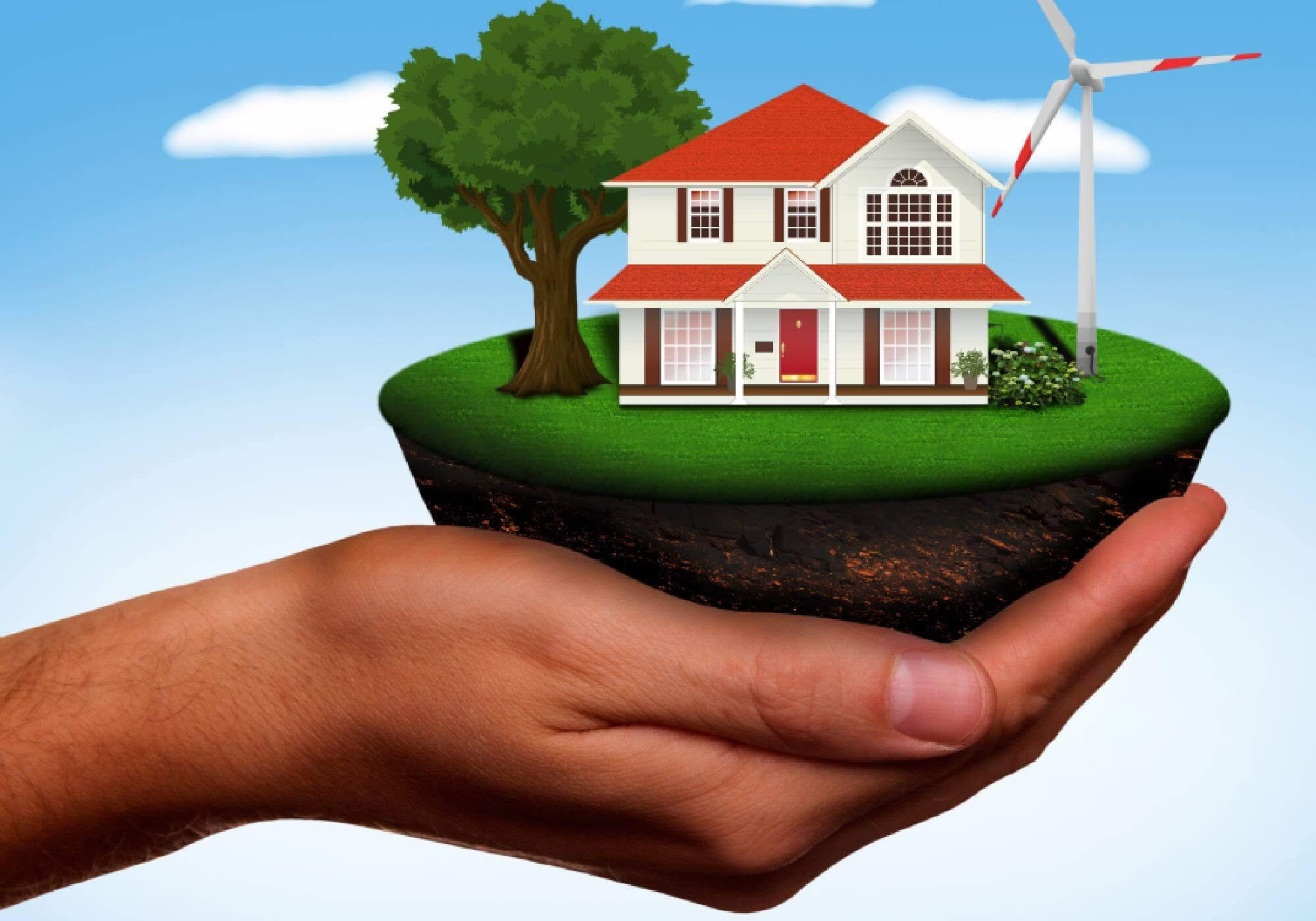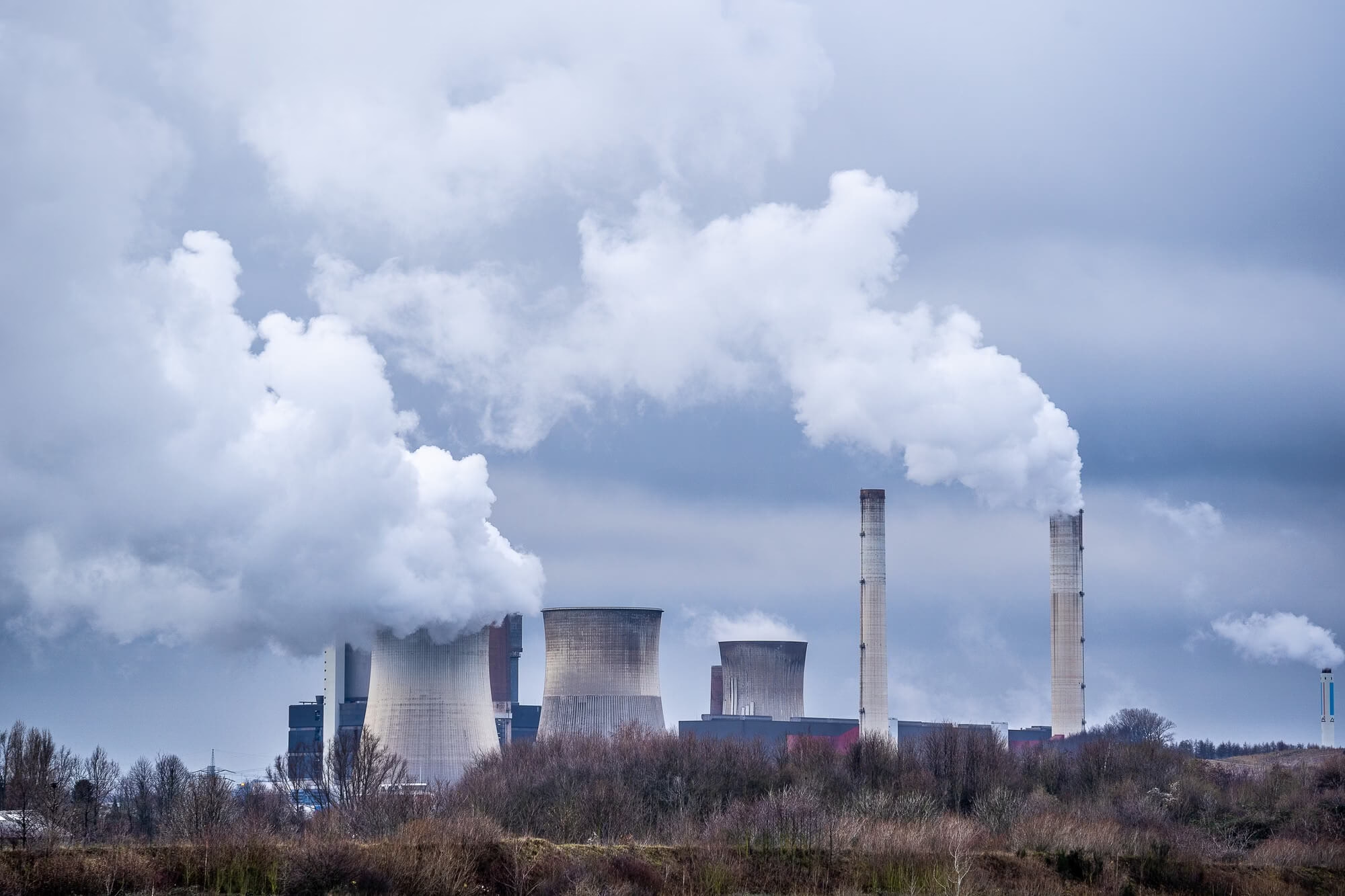Polyethylene succinate (PBS) is not just another plastic; This is a game changer in the transition towards a sustainable future. As industries and consumers become more environmentally conscious, the demand for materials that reduce waste and promote sustainability is increasing. PBS, is a biodegradable polymer, stands out as a key player in this transformation. Let’s explore how PBS is lead transformation in waste management and supporting the circular economy. Why Polyethylene Succinate is Special? Polyethylene succinate is a biodegradable plastic that breaks down naturally, unlike conventional plastics that can persist in the environment for hundreds of years. This alone, PBS, is an important asset in reducing plastic waste. However, PBS offers more than just its biodegradability. It also possesses the properties of traditional plastics such as strength, ductility, and heat resistance, making it versatile enough to use in everything from packaging and agricultural films to textiles and disposable cutlery. By choosing PBS over conventional plastics, manufacturers can significantly reduce their environmental impression. This transition not only reduces our dependence on fossil fuels but also supports the broader goal of creating a more sustainable economy. Polyethylene Succinate’s Role in Waste Management PBS is playing a critical role in transforming waste management by handling some of the most pressing challenges. Here’s how PBS contributes: Incorporating PBS into the Circular Economy The circular economy is about reducing waste, reusing resources, and regenerating natural systems. Polyethylene Succinate fits perfectly into this model by offering materials that support each of these goals. In a circular economy, products are designed with their entire life cycle in mind. PBS makes this possible by becoming an eco-friendly option from start to end. For example, packaging made of PBS doesn’t just temporarily serve its purpose; It can be composted or recycled, keeping the material in use and reducing the need for new, virgin resources. The adoption of PBS is also increasing innovation. As more companies start using PBS, there is a push for better composting technologies and recycling systems. This collective effort is helping to make sustainable practices more accessible and broader, moving us closer to a truly circular economy. Overcoming Challenges and Future Outlook While Polybutylene Succinate has many advantages, there are still challenges to overcome. The production cost of PBS is currently higher than that of traditional plastics, which can be a barrier to widespread adoption. However, as demand for sustainable materials growing and manufacturing processes become more efficient, these costs are expected to come down. Another challenge is the infrastructure needed to manure and recycle PBS. For PBS to reach its full potential, we require better systems in place for its disposal. This requires collaboration between governments, businesses, and consumers to build and support these systems. Despite these challenges, the future of Polyethylene Succinate looks bright. As more industries recognize the benefits of PBS, it is likely to become a standard material in waste management practices. Its ability to reduce plastic pollution and support recycling efforts makes it a vital tool in creating a more sustainable future. Conclusion Polyethylene Succinate is more than just a biodegradable plastic, it is a catalyst for change in the way we manage waste and think about resources. By utilizing PBS, we can take important steps toward a circular economy where waste is minimized, and the environment is protected. As we continue to look for sustainable solutions, PBS offers a promising path forward.
Green Technology | Revolution in Chemical Manufacturing
Chemical manufacturing is currently experiencing a significant change. Green technology is leading the way, moving industry towards more sustainable, efficient and environment-friendly practices. As the root of many products and industries, chemical manufacturing has traditionally relied on processes with notable environmental challenges. However, with the involvement of green technology, the industry is now setting new standards and reshaping the future of chemical production. The Rise of Sustainable Processes Sustainable practices have become a necessity in chemical manufacturing. Companies now adopt methods that cut waste, reduce energy consumption, and reduce harmful emissions. Let’s look at the key changes driving this change. 1. The Role of Catalysts Catalysts play an important role in chemical reactions. Green catalysts take this concept further, providing substantial environmental benefits: The study of green catalysis opens up new possibilities for sustainable chemical synthesis. From pharmaceuticals to biofuels, these catalysts drive innovation across industries. 2. Utilizing Renewable Resources Chemical manufacturers now take up renewable resources as a starting material. This move makes a significant departure from fossil fuel dependence. Innovation in Green Chemistry Green chemistry own this revolution in chemical manufacturing. It focuses on creating chemical products and processes that are both safe and more sustainable. Major innovations are currently shaping this transformation: Preventing Waste at the Source Green technology teaches us to look at waste as a potential resource. This circular approach reduces resource consumption and pollution while creating new economic opportunities.Carbon dioxide capture and utilization serves as a prime example. Instead of releasing CO2, companies learn to turn it into useful chemicals, from building materials to fuels. This innovative thinking addresses climate change while creating value. Water Conservation: Preserving a Vital Resource Chemical formulations often require significant water use. Green technologies direct this challenge through: By understanding these water conservation strategies prepares future, chemists, and engineers to tackle one of the industry’s most crucial challenges. As a result, they become better prepared to implement effective solutions and bring about significant improvements. Lowering Energy Usage Green chemical manufacturing prioritizes energy conservation through various means: Understanding these energy-saving technologies is important for the design and operation of sustainable chemical facilities. Circular Economy: Closing the Loop Chemical manufacturing is evolving with the rise of a circular economy. Unlike traditional linear models, where raw materials form products that are disposed of after use, a circular economy entails extending the life of materials. This approach effectively reduces waste and conserves resources. Manufacturers are actively designing products that are easy to disassemble, recycle, or reproduce at the end of their life cycle. By doing so, they not only reduce the environmental impact but also recover valuable materials that would otherwise be discarded. This method brings both environmental and economic benefits. In addition, recycling of chemicals and using waste as feed stock is becoming more popular. Companies are increasingly searching for ways to reproduce byproducts and waste materials, thus establishing closed loop systems. Such systems are both sustainable and cost-effective. As a result, the circular economy is emerging as an important strategy to reduce environmental impact while ensuring profitability. The Future of Chemical Manufacturing The future of chemical manufacturing lies in the ability to fully utilize green technology. As the industry continues to innovate and adopt sustainable practices, the benefits are clear: reduced environmental impact, improved efficiency and new economic opportunities. Green technology is not just a trend, it’s the driving force behind a more sustainable and resilient chemical manufacturing industry.
Climate Change and the Oceans | The Reality of Rising Sea Levels
Climate change is rapidly changing our world. Rising sea levels are one of the most visible and dangerous consequences. As the oceans rise, there are impacts globally. Coastal erosion intensifies, and the entire community face displacement. We must take some action now. But why are the oceans rising? And what will be the impact on the future of our planet? Science Behind Rising Sea Levels Sea level is rising, and there are mainly two factors behind this rise: thermal expansion and melting ice. Understanding these causes is important to understanding the severity of the condition. Thermal Expansion As the temperature of our planet is rising, the oceans then absorb excess amount of heat. Different hidden forces, like the burning of fossil fuel, contribute to this temperature increase. As the warm water expands, causing sea levels to rise. This process, known as thermal expansion, and is responsible for a significant amount of the current rise in sea level. As the oceans warm, they expand more and more, gradually pushing water further towards the interior of a country. Melting Glaciers and Polar Ice Sheets Melting glaciers and polar ice sheets also contribute a large amount of freshwater to the oceans. This occurs in reaction to thermal expansion. Greenland and Antarctica, in particular, are losing ice at an accelerated pace due to rising global temperatures. This rapid flow of freshwater further raises sea levels, exacerbating the problem. Global Effects of Rising Sea Levels Rising sea level is a far-reaching effect that extend well beyond coastlines. Coastal cities and towns are at the leading edge of this crisis. Many of the world’s largest cities, including New York, Tokyo, and Mumbai, are located near the coast. These cities are likely to suffer from severe flooding. As sea levels rise, these cities will experience more frequent storms. The storms will be more intense and will cause costly damage. They will also threaten the lives of millions of people. Urban areas as well as small island nations face increasing vulnerability. Countries like the Maldives and Kiribati are already grappling with the severity of rising seas. Some islands become fully submerged within the next few decades. For these countries, rising sea levels are not just an environmental issue, but an existential matter. Moreover, the impact on ecosystems is also undeniable. Coastal habitats like mangroves, swamps, and coral reefs offer significant protection against storms. They also serve as nurseries for marine life. Sea levels are rising. These habitats are being eroded or submerged. This results in a loss of biodiversity and weakens the natural defenses that protect coastal communities. Economic and Social Implications The economic costs caused by rising sea levels are rising rapidly. Coastal infrastructure, including homes, roads, and ports, face an increased risk of damage from flooding and erosion. As the cost of repairs and reconstructions rises, the financial burden on governments and individuals becomes equally heavier. Insurers expect premiums for properties in vulnerable areas to rise. This increase makes it more expensive to live or work near the coast. Socially, the consequences are equally severe. Rising sea levels are already displacing communities, forcing people to leave their homes and seek shelter elsewhere. This migration often leads to overcrowding in urban areas, pressures on resources, and tensions between displaced populations and host communities. In some instances, entire cultures are endangered. Ways of life are at risk as people are forced to leave their ancestral lands behind. What Can Be Done? We need to tackle rising sea levels with a global strategy. We must take various actions that work together. This approach will effectively handle the problem. Reducing greenhouse gas emissions is urgently needed. These emissions are the main reason for global warming. They also cause sea level rise. Transitioning to renewable energy sources is crucial. We also need to improve energy efficiency. Protecting natural carbon sinks, like forests and wetlands, is essential in mitigating climate change. At the same time, adaptation strategies are necessary to protect vulnerable communities. Building resilient infrastructure, like sea walls and flood barriers, can help to protect coastal areas from the worst impacts. In some cases, managed retreat is necessary. This involves relocating communities away from high-risk areas. This strategy is essential to keep long term safety and stability. In addition, international cooperation is very significant. Rising sea levels are a global issue that requires collective action. Rich countries have significantly contributed to climate change. They bear the responsibility of actively supporting poor countries as they adapt to its impacts. This means offering financial support, sharing advanced technology, and bringing skill to disaster preparedness and response efforts. Global Responsibility and Action Rising sea levels are a reminder of the urgency of addressing climate change. The results are already being felt, and now is the time to act. By taking immediate and decisive action, we can slow sea level rise and protect our planet for future generations.
Top 5 Causes of Climate Change: Hidden Forces Behind
Earth’s climate faces unprecedented changes, driven by human activities. This is an indisputable reality, and the reasons are as complex as they are related. But understanding what motivates this phenomenon is the first step toward addressing it. Let’s examine the top 5 causes of climate change that demand our attention and action. 1. Human Activities Driving Climate Change Human actions are the primary force behind climate change. From the energy we consume to the food we eat. Our daily activities have a significant impact on the planet. Burning of Fossil Fuels Fossil fuels power most of the world’s industries, vehicles, and homes. However, burning coal, oil, and natural gas releases large amounts of carbon dioxide (CO2) into the atmosphere, trapping heat and increasing global temperatures. Industrial Processes Industries play an important role in climate change. The production of goods, chemicals, and materials releases CO2, methane, and nitrous oxide, which are all potent greenhouse gases. The energy-intensive nature of these processes increases their impact on the environment. 2. Land Use Changes and Climate Impact How we use land has a direct impact on climate change. Turning forests into farmland or urban areas reduces the Earth’s ability to absorb carbon and alters natural ecosystems. Deforestation Forest acts as a natural carbon sink, absorbing CO2 and releasing oxygen. When forests are cut down for agriculture, logging, or urban development, stored carbon is released into the atmosphere, and the Earth loses one of its best defenses against climate change. Urbanization Expanding cities and infrastructure replace natural landscapes with concrete and asphalt, which absorb and retain heat. This change not only contributes to global warming but also disrupts the local climate and weather patterns. 3. Agriculture’s Role in Climate Change Agriculture is essential to human survival, but modern agriculture have significant environmental costs. The way we farm and produce food contributes to greenhouse gas emissions. Use of Synthetic Fertilizers The use of synthetic fertilizers in agriculture releases nitrous oxide, and other greenhouse gases. While these fertilizers help increase crop yields, their production and application contribute to climate change. Livestock Farming Raising livestock, especially cattle, generates large amounts of methane, a potent greenhouse gas. Additionally, land is often cleared for grazing, further exacerbating the loss of carbon absorbing forests. 4. Transportation’s Contribution to Climate Change The way we move goods and people around the world is another important cause of climate change. Transport relies heavily on fossil fuels, which contribute to a large portion of global emissions. Road Vehicles Cars, trucks, and buses mostly run on gasoline or diesel, both of which produce CO2 when burned. The global increase in vehicle ownership has led to rising emissions from road transport. Aviation and Shipping Airplanes and ships are also major contributors to climate change. Aviation emits CO2 at high altitudes, where its impact on the climate is greater, while shipping is responsible for the emission of large amounts of sulfur oxides and other pollutants. 5. Waste Management and Greenhouse Gas Emissions How we handle waste has a direct impact on the climate. Poor waste management practices contribute to the release of greenhouse gases. Waste Treatment Facilities Facilities that treat sewage and other waste streams also contribute to emissions, especially if they burn waste or use energy intensive processes. Landfills Organic waste in landfills decomposes and produces methane, a much more potent gas than CO2. Reducing waste and improving landfill management could significantly reduce methane emissions. Practical Advice to Combat Climate Change Now that we have identified the top 5 causes of climate change, here are some actionable steps we can take to reduce our impact: 1. Transition to Renewable Energy One of the most effective ways to combat climate change is to reduce our dependence on fossil fuels. And transition to renewable energy sources, such as solar, wind and hydropower, could significantly cut CO2 emissions. Individuals can support this transition by selecting green energy schemes, installing solar panels, and advocating for clean energy policies. 2. Advocate for Cleaner Industry Practices Industries need to adopt cleaner technologies and reduce their greenhouse gas emissions. As consumers, we can bring about changes by supporting companies that prioritize sustainability and use eco-friendly materials. Stand up for stricter environmental regulations that require industries to reduce their carbon footprint. 3. Reduce, Reuse, Recycle Reducing waste is critical in the fight against climate change. Adopt the principles of reduce, reuse, and recycle into your daily life. By recycling materials, reducing single use plastics and reusing items, you can help reduce demand for new products and the emissions associated with their production and disposal. Conclusion Climate change is a complex issue, but understanding the primary causes can encourage us to take action. By making informed choices and supporting sustainable practices, we can reduce our impact on the environment and help protect our planet for future generations.




